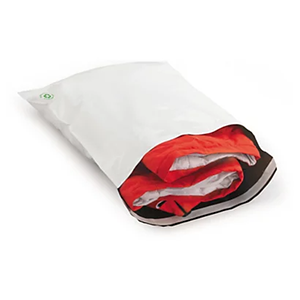Sparkling white teeth are a status symbol. The good housewife only has peace of mind when the laundry flutters brilliantly white on the line. If you believe advertising television, everything that is clean, pure and innocent is also necessarily white. Paper quality is also mainly measured by the degree of whiteness – or so-called whiteness. The whiter the paper, the more valuable it appears. In addition, opacity, grammage and paper thickness determine paper quality. We explain the three factors that make paper quality measurable.
Read on:
More on whiteness – More on opacity – More on paper thickness – More on DIN formats
Whiteness
How “white” a sheet of paper is perceived as depends on how strongly the light is reflected by the paper. A relatively subjective matter, therefore, and dependent on light and eye conditions. The human eye hardly notices small deviations.Objective comparisons can be made using the ISO 11475:2004 or CIE scales. The ISO scale is mainly used for recycled paper and ranges between values of 50-70 ISO (also called press white) and 110 ISO. The higher the value, the whiter the paper.
Theabbreviation CIE stands for Commission Internationale de l’Éclairage (French: the “International Commission on Illumination”), which deals extensively with colours and cooperates in the field of standardisation with well-known institutions such as the ISO (International Organization for Standardization). The higher the measured value, i.e. the whiteness, the “whiter” the white. For office papers, it is around 160. A high whiteness ensures that the paper has a high-quality appearance and that colour prints have bright and expressive colours. The maximum value on the CIE scale is 171. A distinction is made between the paper classes RECYCLED, UNIVERSAL, BUSINESS and PREMIUM, see chart.
Grammage and paper thickness
The grammage is an indication of the quality of a paper and describes the basis weight, i.e. the weight of the material in relation to the surface area. It is also referred to as paper thickness and is expressed in grams per square metre (g/m², g/sqm or gsm). Standard copy papers usually have a grammage of 80 g/m². In this case, one also speaks of 80g (gram) paper. If the grammage is too low, the paper will crease or tear more easily and is not suitable for double-sided printing because the print would show through too much. The paper thickness also determines the paper weight and can therefore influence the cost of mailing. To save postage, letters are therefore often printed on paper with a lower grammage. Parallel to the terms grammage and paper thickness, the term paper quality is also used.Opacity
The opacity of a printer paper plays a role especially for duplex printing (double-sided printing). Opacity is the opposite of transparency and describes the opacity of a material. Opacity is indicated on a scale from 0% (completely transparent) to 100% (completely opaque). An opacity of at least 80% is required for a paper to be printed on both sides. If the opacity of the paper is too low, the print on the reverse side shows through and the content becomes illegible.
Paper thickness
Paper thickness describes the thickness of the paper in mm or µ. Printer paper for office use is usually around 0.1 mm thick. The difference is not visible to the naked eye. Of course, a higher paper thickness has a positive influence on the value, feel and opacity of the paper.Relationship between grammage, opacity and paper weight
Of course, the terms are mutually dependent. Sheets of paper with a high grammage are automatically less transparent and thus also have a higher opacity. So which paper is the best? That depends very much on the intended use. In general, paper with a high degree of whiteness and a high grammage is considered “more valuable”. Applications, presentations and brochures do better on stronger paper. For mailing, however, the weight also plays a role, and environmental aspects also determine which paper is used. Since paper with a low degree of whiteness usually has a high recycled content, it is perfect for all purposes where it is purely about the content and less about the “appearance”.
Below is the formula for calculating the weight of paper for mailing – it’s even easier with the paper weight calculators on the web.
What is universal paper?
Universal paper (also called multifunctional paper) is paper that can be used for all everyday applications and all common office equipment. The surface is such that both the ink of an inkjet printer and the toner of a laser printer adhere well and dry quickly. Universal paper is also suitable for copying and faxing. In contrast, special paper is designed for a specific purpose only. Photo paper, for example, has a glossy coating and is therefore not suitable for business correspondence.
Which paper is suitable for what?
| Grammage | Paper suitable for |
|---|---|
| 80 – 100 g/m² | Standard office paper for simple printouts, photocopies, correspondence |
| 110 – 120 g/m² | High-quality paper for official business documents such as letterheads or brochures |
| 130 – 170 g/m² | Strong paper for flyers, posters and inside pages of brochures |
| 170 – 200 g/m² | Cardboard, suitable for outside pages of brochures or magazines, high-quality posters and double-sided flyers |
| 200 – 250 g/m² | Stronger board for sturdy outer pages of brochures and magazines as well as postcards |
| 300 – 400 g/m² | Ideal paper thickness for business cards and outside pages of brochures, but more difficult to process due to its thickness |
The origin of DIN paper sizes
Why do we actually print all letters on DIN A4 paper? And how can it be that most card games and daily newspapers have the same format? There are clear rules for dealing with paper. Because, as we know, we Germans love standards. The German Institute for Standardisation (DIN), for example, is the largest institution of its kind in the world. One of the oldest and probably best-known standards of the institute is the DIN standard for paper formats. Every new schoolchild already comes into contact with the DIN 476 standard when it says DIN A4 notebook or DIN A5.
How did the DIN standard for paper come into being?
DIN 476 has been in existence since 18 August 1922, when the German mathematician Dr. Walter Porstmann was working in Berlin for the “Standards Committee of German Industry” (today: Deutsches Institut für Normung e.V.). Every day he had to deal with numerous files, documents and papers, all in different formats and forms that did not fit together and made it very difficult to organise them. As an order-loving bureaucrat, this was a real nuisance for Porstmann, but at the same time he already had the environment in mind: “The gain for the general public resulting from the standardisation of paper formats is especially high because it means the conservation of our most precious resource, the forests,” Porstmann argues. His metric model brought order to the system: the starting point is the A0 format with a base area of one square metre. The aspect ratio, however, is not 1:1 as with a square, but 1:1.41. With A0, that is 840 by 1,189 millimetres. These proportions apply to all DIN formats. Therefore, you can halve A0 as often as you like: once to DIN A1, twice to DIN A2 or four times to the well-known 210 by 297 millimetres of DIN A4.
DIN is the general abbreviation for the German Institute for Standardisation and refers to standard sizes for paper formats that have been defined in Germany since 1922.
DIN sizes are the most common specification worldwide for the size of a sheet of paper. They were later adapted as standard by almost all countries (exceptions are e.g. the North American countries). Common formats in everyday life are, for example, DIN A2 (420 x 594 mm for posters), DIN A4 (210 x 297 mm for letters) or DIN A6 (105 x 148 mm for flyers). In the office supplies sector, copying paper is usually required in A4 format or DIN A3 for larger printouts.
The standardisation of paper formats
In his standardisation, Porstmann started from a rectangular sheet of paper one square metre in size, the DIN A0 format. The ratio of the two sides to each other is 1: ?2 (approximately 1:1.41). With the help of this formula, the ratio of the side lengths always remains the same. This means that all smaller formats can be created by halving the basic format. So if you fold DIN A0 once, you get DIN A1, folded twice you get DIN A2, three times DIN A3, four times DIN A4 and so on. (see diagram). This very simple principle of paper standardisation spread throughout Germany within 14 years. In 1975, DIN 476 became the international standard ISO 216, which eventually became accepted worldwide. Only the USA and Canada use other formats.
Source : https://de.wikipedia.org/wiki/PapierformatThe DIN paper formats according to DIN 476/ISO 216
What does DIN A, DIN B, DIN C mean? According to DIN 476, there are four series, designated A to D and numbered consecutively from 0 to 10. We encounter and are influenced by the formats of the DIN A series very often in everyday life in the form of letters and booklets (DIN A4), flyers, postcards and toilet paper (DIN A6), film posters (A1) etc.. The DIN A formats are therefore also the starting point for calculating the other paper format series. The DIN D series is the smallest of the series and is used only rarely; an example of its use is DIN D5, which is used for DVD cases.
DIN B formats are primarily used for brochure covers and folders, envelopes, playing cards and labels (DIN B8), passports (DIN B7) and books (DIN B5 and B6). DIN B is also called sheet format because, with a few exceptions, they are the printed sheet formats for printed matter from the DIN A series. DIN B formats are larger than DIN A formats by about 1.19 m². For the width calculation of the DIN B series, the root is taken from the DIN A format of the same size, but for the length calculation, the root is taken from the next larger DIN A format. DIN B4 would therefore be: Width = A4 x Length = A3.
The formats of the DIN C series are most frequently used for envelopes and mailing bags. The starting point for calculating DIN C is again the A series: For the width, the square root of the sum of the A format of the same size is taken and for the length calculation, the square root of the sum of the next larger DIN B format is taken. DIN C4 would therefore be: Width = A4 x Length = B3
Which sheet fits into which envelope?
To avoid having to calculate each format individually, we have summarised all formats of the DIN A-C series with examples from everyday life in the following table to simplify matters:
The DIN paper formats overview
| DIN A | Dimensions W x H in mm | Range of application | DIN B | Dimensions W x H in mm | Application | DIN C | Dimensions W x H in mm | Application |
|---|---|---|---|---|---|---|---|---|
| A0 | 841 x 1189 | printed sheets, technical drawings, wall posters | B0 | 1000 x 1414 | – | C0 | 917 x 1297 | – |
| A1 | 595 x 841 | Printed sheets, technical drawings, posters, maps, advertising material | B1 | 707 x 1000 | – | C1 | 648 x 917 | – |
| A2 | 420 x 594 | Desk pads, wall calendars, flip chart sheets, photo printing | B2 | 500 x 707 | – | C2 | 458 x 648 | – |
| A3 | 297 x 420 | Newspapers, sheet music, posters, photographs, organigrams | B3 | 353 x 500 | – | C3 | 324 x 458 | – |
| A4 | 210 x 297 | Forms, stationery, brochures, booklets, (children’s) books | B4 | 250 x 353 | Newspapers, envelopes | C4 | 229 x 324 | Mailers, envelopes |
| A5 | 148 x 210 | Flyers, notepads, letterpress, magazines | B5 | 176 x 250 | Books | C5 | 162 x 229 | Envelopes |
| A6 | 105 x 148 | Postcards, greeting cards, pocket books, pocket calendars | B6 | 125 x 176 | Books | C6 | 114 x 162 | Envelopes |
| A7 | 74 x 105 | Pocket diaries, small information brochures (e.g. timetable, course schedule, calendar of events) | B7 | 88 x 125 | Passport | C7 | 81 x 114 | – |
| A8 | 52 x 74 | Playing cards, bank cards, business cards, stickers, labels | B8 | 62 x 88 | Labels | C8 | 57 x 81 | – |
| A9 | 37 x 52 | Passport photos | B9 | 44 x 62 | – | C9 | 40 x 57 | – |
| A10 | 26 x 37 | Special stamps | B10 | 31 x 44 | – | C10 | 28 x 40 | – |















